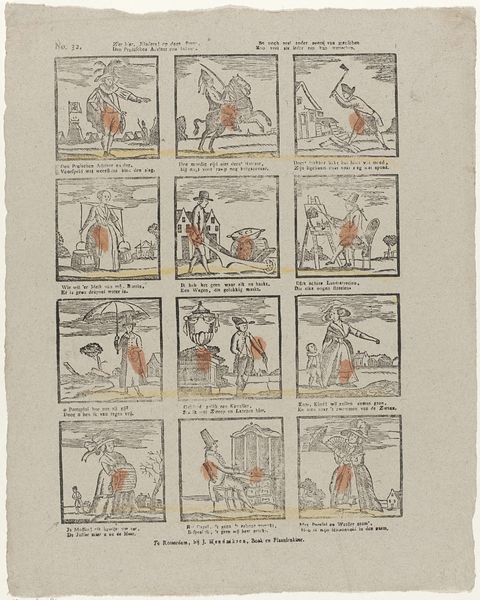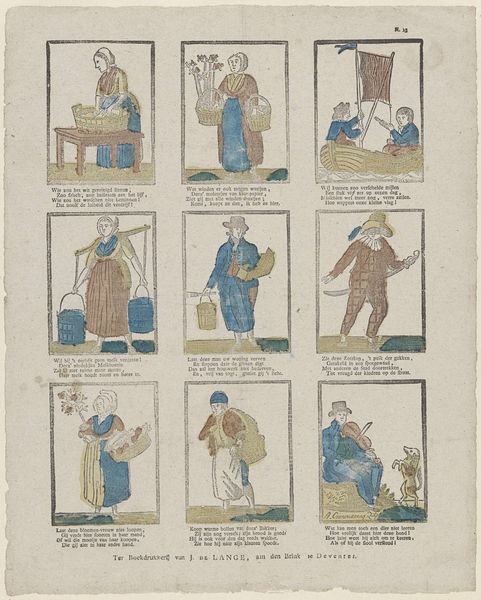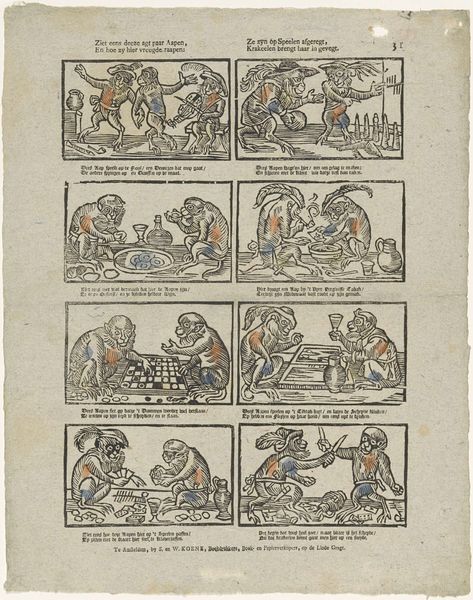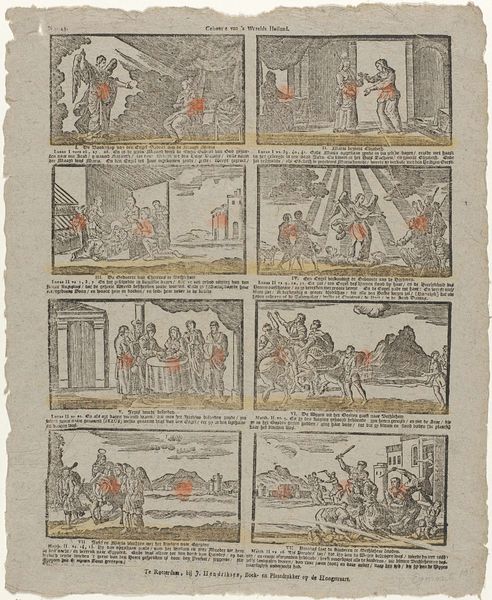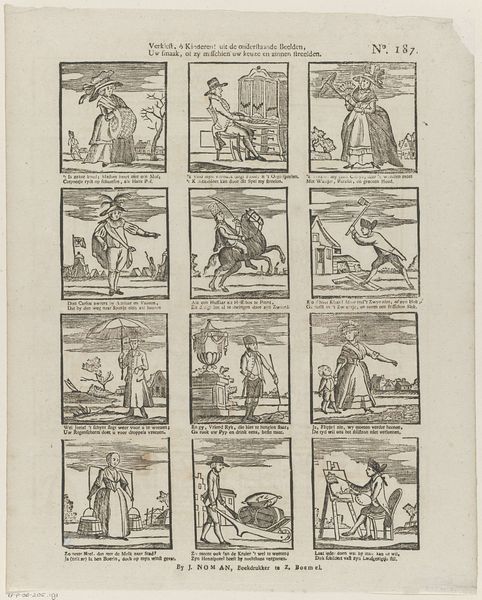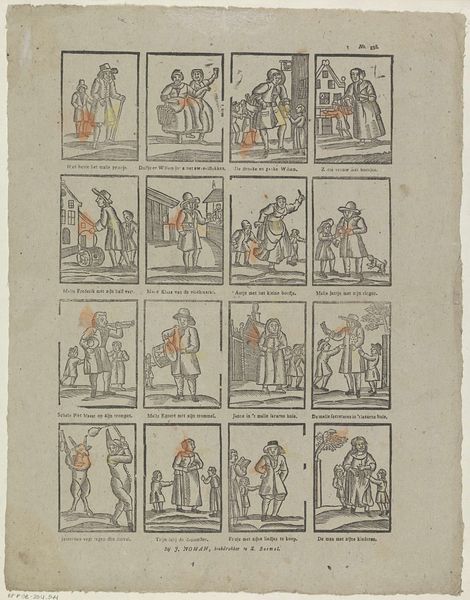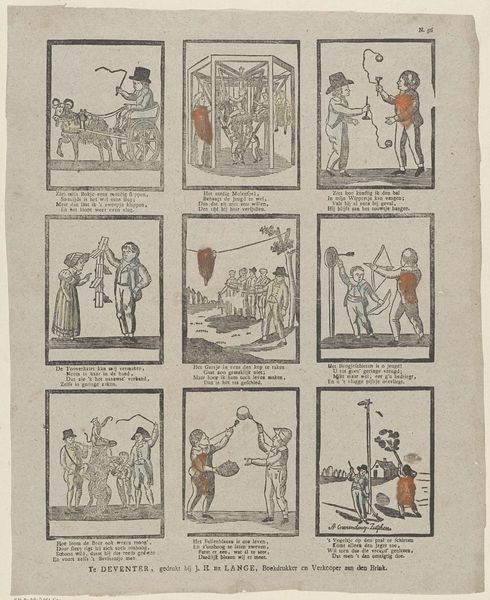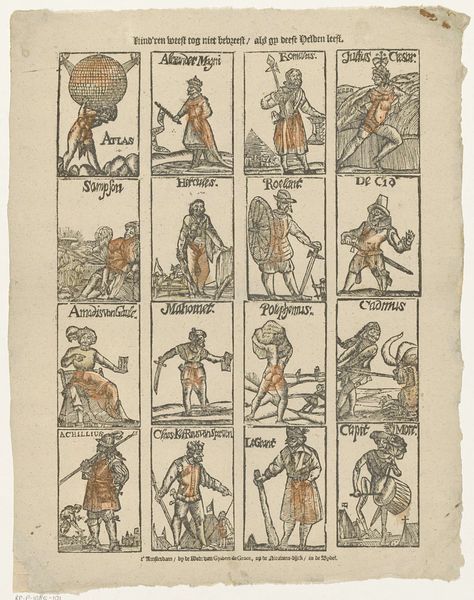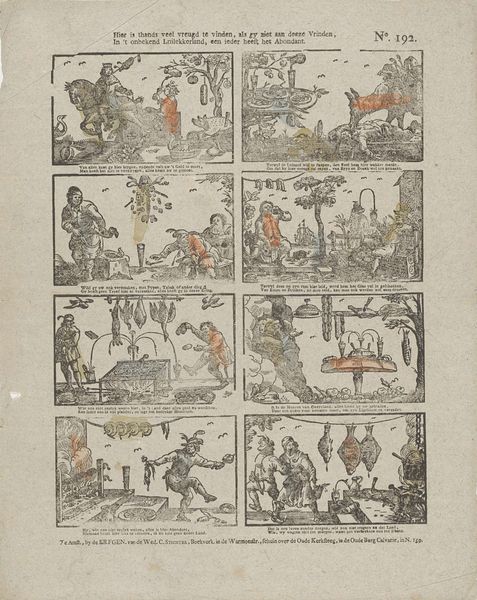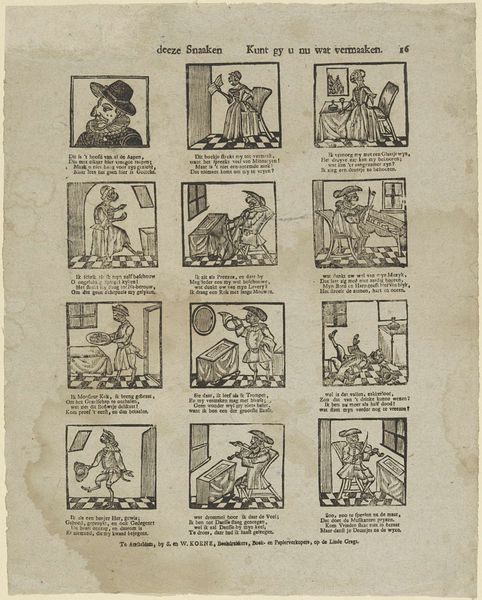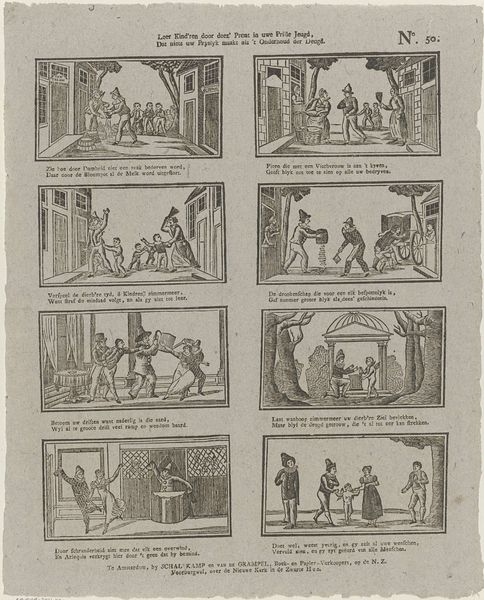
Uyt de schriften der Griexe wijsgeeren / Mag men ook wel goede lessen leeren 1725 - 1780
0:00
0:00
johannesiikannewet
Rijksmuseum
print, engraving
# print
#
figuration
#
line
#
genre-painting
#
history-painting
#
engraving
Dimensions: height 407 mm, width 307 mm
Copyright: Rijks Museum: Open Domain
Editor: This engraving from somewhere between 1725 and 1780 by Johannes Kannewet, titled "Uyt de schriften der Griexe wijsgeeren / Mag men ook wel goede lessen leeren" is fascinating. It features nine little scenes, almost like tarot cards, with figures and text. There’s an interesting combination of symbolic imagery. What story do you think this piece is telling us? Curator: The very structure—these nine scenes laid out like a broadside—speaks to a culture of accessible knowledge. Printmaking made philosophy portable. We see historical figures, possibly representing virtues or philosophical concepts drawn from classical sources. These weren’t just aesthetic choices; they were designed to impart specific ethical lessons to a wide audience. Look at the combination of image and text; it acts as an early form of visual rhetoric. Do you think the arrangement of these scenes tells us something about the hierarchy of these ideas? Editor: That's an insightful question. The scenes aren’t drastically different sizes, but perhaps the middle row, with the characters seeming to be in motion, symbolizes how those qualities drive towards higher states of being? How does this use of history-painting connect to genre painting in a print like this? Curator: Good point. Genre scenes brought philosophy to daily life. Instead of distant heroes, people saw familiar situations where moral choices were present. This print attempts to bridge those worlds by depicting archetypal situations where practical wisdom—the 'good lessons'—apply to daily existence. Ultimately, these scenes are public service announcements about ethics and behavior within their social context. The purpose isn't necessarily beautiful artwork, it's effective societal communication. Editor: That definitely shifts my perception, seeing it as more of a public announcement rather than a purely aesthetic piece. It’s interesting to think about how art serves a specific purpose in shaping behavior. Thanks!
Comments
No comments
Be the first to comment and join the conversation on the ultimate creative platform.
